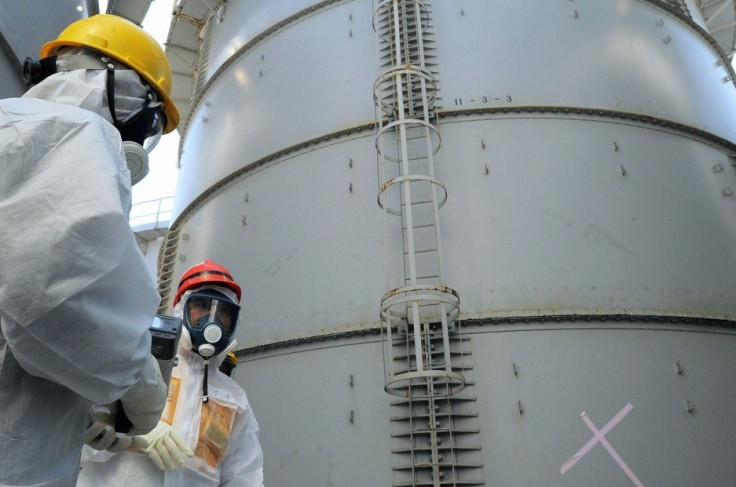Radiation Levels Spike as Battle to Contain Fukushima Leaks Intensifies

Radiation levels have risen 18-fold in the pipes and containers for the radioactive water that cools the crippled Fukushima nuclear reactors, the plant's owners have said.
Recent readings recorded radiation levels of 18,000 millisieverts per hour in the bottom of one tank, while 220mSv/h and 70mSv/h were measured at the bottom of other two tanks.
In August, the radiation level in the first tank was measured at 100mSv/h.
A dried stain under one pipe measured 230mSv/h, said a spokesman for Tokyo Electric Power Co (Tepco).
Japanese law prohibits workers being exposed to radtion measuring more than 50mSv/h.
In recent weeks, Tepco has battled to prevent leaks in the thousands of makeshift tanks built in the wake of the 2011 disaster to hold radioactive water, and to prevent contaminated groundwater flowing through the site entering the Pacific ocean.
Tepco said that only a single drop of water had so far escaped the most highly radioactive pipes, when a worker pressed on insulation material surrounding them.
It said that no more was expected to leak, as water levels inside them were not going to rise.
The spokesman also claimed that the higher reading was partly caused by workers using new instruments capable of reading thousands not just hundreds of millisieverts of radiation.
The company criticised media reports that radiation levels in the tanks were high enough to kill someone in hours if exposed, and said that they mostly gave off beta rays which could be safely deflected, not the more dangerous gamma rays.
"We will find out the cause of this issue and make proper counter measures immediately, and continue to make every effort to secure safety of workers," the company said on Sunday.
The tanks are identical to those that spilled highly toxic water into the Pacific last month, with Japan's nuclear regulator later raising the severity of the leak from a level 1 "anomaly" to a level 3 "serious incident" on an international scale for radiation releases.
Last week, the country's interior minister, Toshimitsu Motegi, likened Tepco's attempts to deal with the leaks to a game of "whack-a-mole", and said the government was going to step in.
When the plant, north of Tokyo, was devastated in 2011, three fuel rod reactors went into meltdown, and more than 160,000 people were evacuated from the surrounding area. It is the world's worst nuclear disaster since the Chernobyl meltdown in 1986.
Tepco has built a series of tanks to contain radioactive water in Fukushima, most of which are believed to be nearly full. The company pumps 400 tonnes of water through the site daily to keep the crippled reactors cool.
In addition, about 400 tonnes of contaminated groundwater flows through the site daily. Recently, Tepco revealed that groundwater was leaking into the Pacific, bypassing an underground barrier built to contain it.
Tepco president Hitome Hirose has said the company may bring in independent experts to help deal with the toxic water leaks.
© Copyright IBTimes 2025. All rights reserved.




















